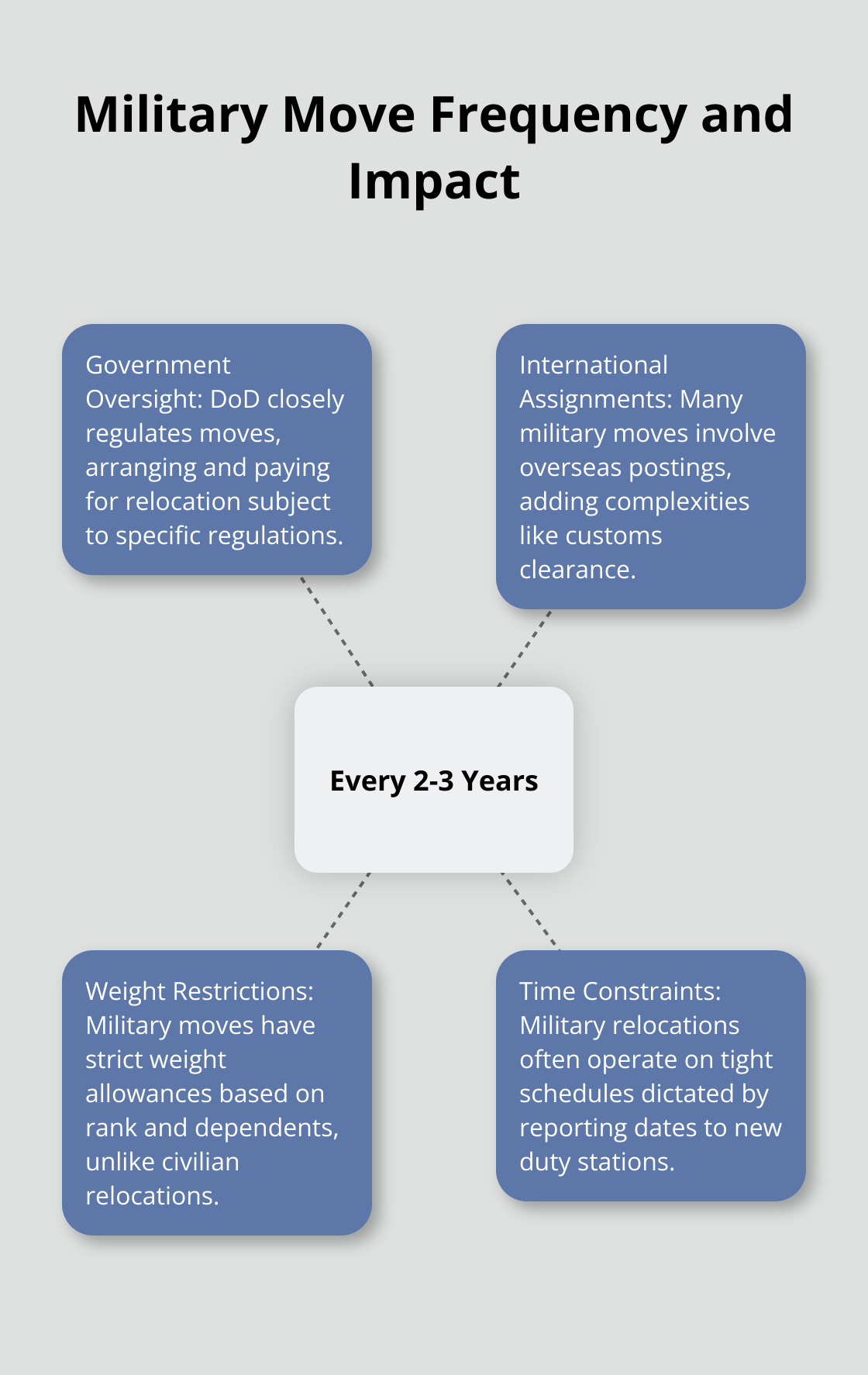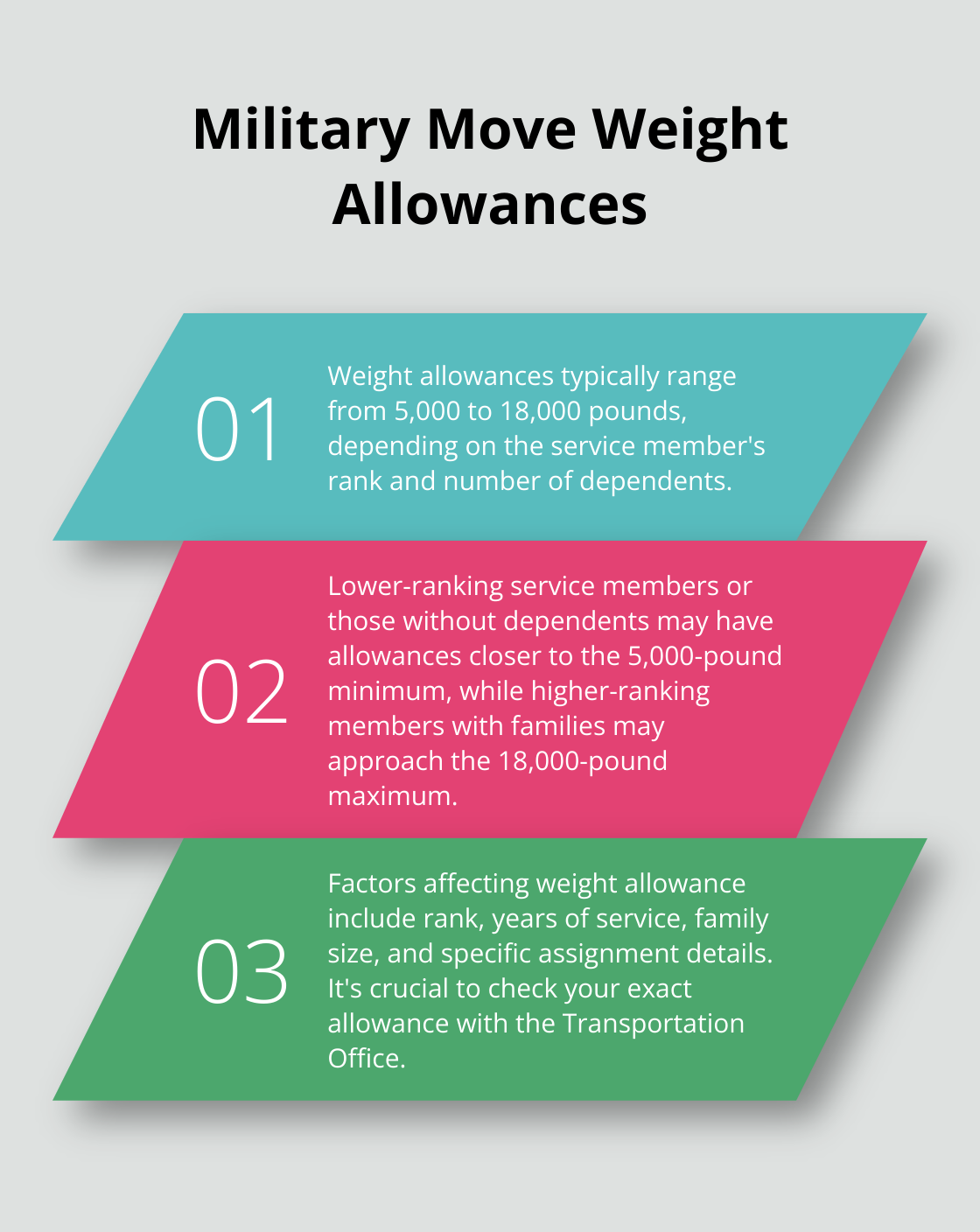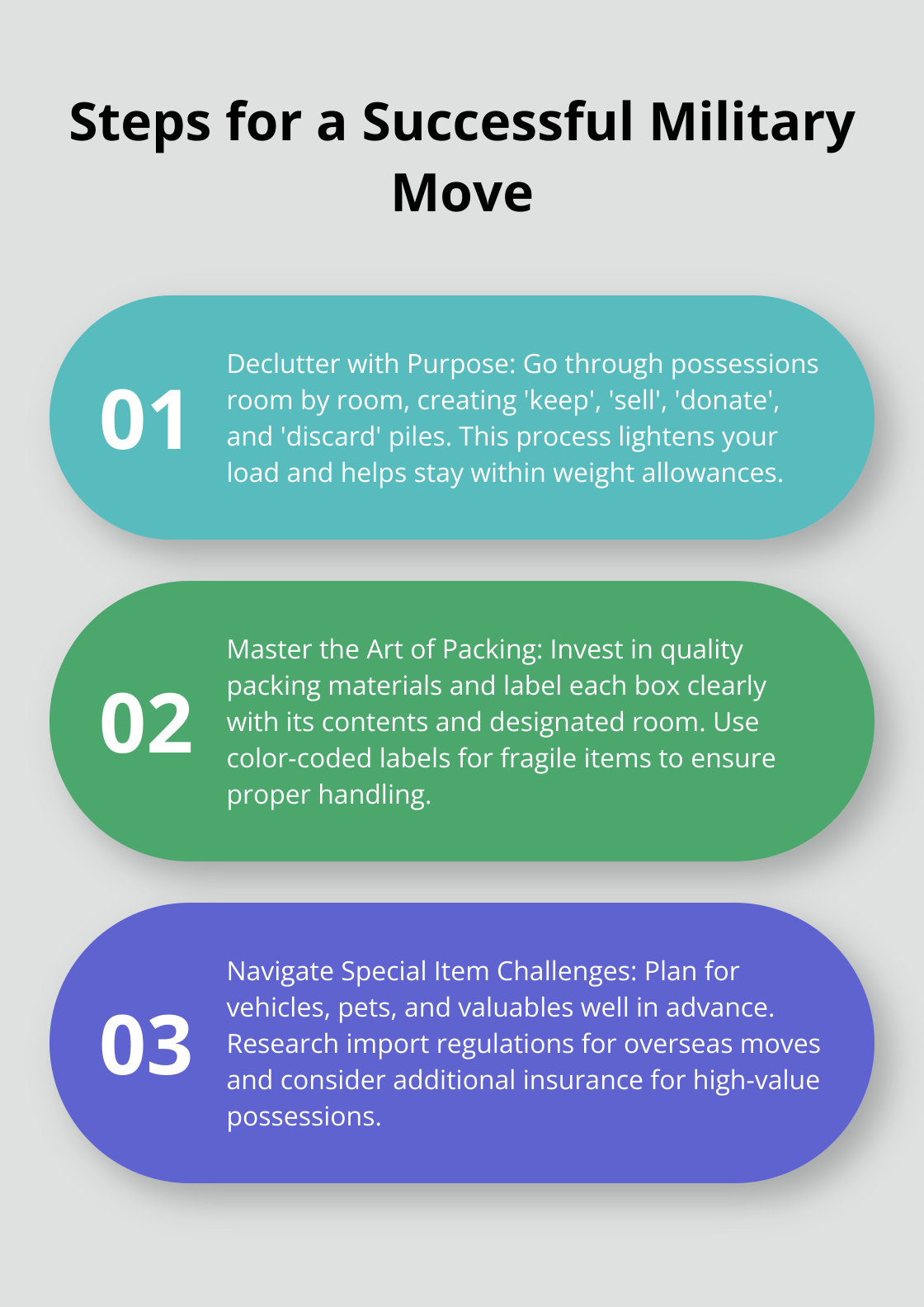Military household goods moves can be complex and challenging. At Southbay Moving Systems, we understand the unique requirements and stresses that come with relocating service members and their families.
This guide will walk you through the essential steps of planning a successful military move, from understanding different types of relocations to preparing for customs clearance. Whether you’re facing a Permanent Change of Station (PCS), Temporary Duty (TDY), or retirement move, we’ve got you covered with practical tips and valuable insights.
What Are Military Household Goods Moves?
Definition and Scope
Military household goods moves involve the transportation of personal belongings, furniture, and equipment for service members and their families when reassigned to a new duty station. These relocations often span long distances or even cross international borders, requiring careful planning and execution.
Types of Military Moves
- Permanent Change of Station (PCS): The most common type of military move, PCS relocations involve long-term assignments (typically 2-4 years) to a new duty station. Service members must transport their entire household during these moves.
- Temporary Duty (TDY): These short-term assignments (usually less than 180 days) require packing and transporting only essential items needed for the temporary posting.
- Retirement Moves: When service members retire, they receive a final move to their chosen destination. This relocation follows specific regulations and weight allowances that differ from active duty moves.
Key Differences: Military vs. Civilian Moves
Military relocations differ significantly from civilian moves in several aspects:
- Government Oversight: The Department of Defense closely regulates military moves. The government typically arranges and pays for the relocation, subject to specific weight allowances and regulations.
- Frequency: Military families relocate much more often than civilian families (every 2-3 years on average). This high frequency demands adaptability and efficient packing skills.
- International Assignments: Many military moves involve overseas postings, which add complexities such as customs clearance and navigating foreign regulations.
- Weight Restrictions: Unlike civilian relocations, military moves come with strict weight allowances based on the service member’s rank and number of dependents. The weight limit generally runs between 350 to 1800 pounds depending on various factors.
- Time Constraints: Military relocations often operate on tight schedules dictated by reporting dates to new duty stations. This leaves less flexibility in planning and execution compared to civilian moves.

Understanding these unique aspects of military household goods moves will help you navigate the complexities of your upcoming relocation. As we move forward, we’ll explore the essential steps to prepare for your military move, including obtaining official orders and scheduling your relocation with the Transportation Office.
How to Prepare for Your Military Move
Secure Your Orders and Understand Your Entitlements
The first step in preparing for your military move is to obtain your official orders. These documents outline your new assignment details and moving entitlements. Once you receive your orders, review them carefully. Pay attention to your report date, as this will influence your moving timeline.
Your entitlements will vary based on factors such as your rank, family size, and destination. These may include weight allowances, temporary lodging expenses, and travel reimbursements. The Defense Travel Management Office website provides detailed information on entitlements for different types of moves.
Schedule Your Move Early
Contact your local Transportation Office to schedule your move as soon as you have your orders. The peak moving season for military families typically runs from May to August, so early booking is essential to secure your preferred dates.
During this initial meeting, you’ll discuss your moving options. You’ll need to decide between a government-arranged move or a Personally Procured Move (PPM, also known as a DITY move). Each option has its advantages and disadvantages, so consider your situation carefully. With a PPM, the more work you do yourself, the more money you can keep after the move.

Create a Comprehensive Inventory
A detailed inventory of your belongings is invaluable during a military move. Start by listing all items room by room. Don’t forget to include items in storage or outdoor areas. Photograph valuable items and note their condition.
This inventory serves multiple purposes:
- It helps you stay organized
- It aids in decluttering
- It provides a record for insurance purposes
In case of loss or damage during the move, a thorough inventory can streamline the claims process.
Consider Weight Limits
Military moves have strict weight limits (typically ranging from 5,000 to 18,000 pounds, depending on rank and dependents). Use the inventory process to identify items you can sell, donate, or discard before the move. This not only helps you stay within your weight allowance but also reduces moving costs if you’re opting for a PPM.
Plan for Special Items
Some items require special attention during a military move. These may include:
- Vehicles: Determine if you’ll ship your car or drive it to your new location.
- Pets: Research regulations for pet transportation, especially for overseas moves.
- Valuables: Plan to transport important documents, jewelry, and other high-value items personally.
With these steps completed, you’ll be well-prepared for your military household goods move. The next section will explore essential strategies for executing a successful relocation, including effective packing techniques and handling unique moving challenges.
How to Execute a Flawless Military Move
Declutter with Purpose
Start your move by eliminating unnecessary items. Go through your possessions room by room and create ‘keep’, ‘sell’, ‘donate’, and ‘discard’ piles. This process will lighten your load and help you stay within your weight allowance.
Consider hosting a yard sale or using online marketplaces for items you plan to sell. The money you earn can offset moving expenses or help furnish your new home. For donations, look for organizations that offer free pick-up services (such as the Vietnam Veterans of America).
Master the Art of Packing
Proper packing protects your belongings during transit. Invest in quality packing materials – sturdy boxes, packing tape, bubble wrap, and packing paper.
Label each box clearly with its contents and the room it belongs to. This simple step can save hours of frustration when unpacking. Use color-coded labels for fragile items to alert movers to handle them with extra care.
Navigate Special Item Challenges
Certain belongings require special attention during a military move. For vehicles, the Military Surface Deployment and Distribution Command offers a vehicle shipping program. If you’re moving overseas, research import regulations for your destination country well in advance.
Plan pet relocation at least six months ahead. Many overseas locations have strict quarantine requirements. The Air Force’s Pet Travel Information website provides excellent resources for navigating these complexities.
Always keep valuable items (jewelry, important documents, family heirlooms) with you during the move. Consider purchasing additional insurance for these high-value possessions.
Master Weight Allowances
Weight limits present a unique challenge in military moves. The Defense Travel Management Office provides a detailed breakdown of weight allowances based on rank and dependency status (typically ranging from 5,000 to 18,000 pounds).
To avoid exceeding your limit, weigh boxes as you pack using a bathroom scale. Keep a running tally and compare it to your allowance. If you approach the limit, consider shipping some items separately or leaving them in storage.
Prepare for Customs Clearance
For overseas moves, customs clearance can be a significant hurdle. Obtain a comprehensive list of restricted items from your destination country’s embassy website. Common prohibited items include certain foods, plants, and weapons.
Create a detailed inventory of all items you’re shipping (including serial numbers for electronics). This inventory will be crucial for customs declarations and can expedite the clearance process.
Research fumigation certificate requirements for wooden items early and factor them into your moving timeline. Some countries mandate these certificates, so it’s essential to be prepared.
To ensure a flawless military move, consider utilizing professional moving services that specialize in handling military relocations with precision and care.

Final Thoughts
Military household goods moves require meticulous planning and organization. You must secure official orders, schedule your move early, and create a comprehensive inventory to ensure a successful transition. Weight allowances present a unique challenge, so you need to plan and pack strategically. For overseas relocations, customs clearance adds complexity that demands thorough research and preparation.
Early preparation is key to a smooth military move. Start planning as soon as you receive your orders to address potential challenges and unexpected issues. Utilize resources provided by the Defense Travel Management Office, Military OneSource, and your local Transportation Office for valuable guidance on entitlements, regulations, and best practices.
You don’t have to navigate this complex process alone. Professional moving services like Southbay Moving Systems specialize in military relocations and can provide expert assistance throughout your move. With the right preparation and support, you can execute a successful military household goods move and start your new assignment confidently.




